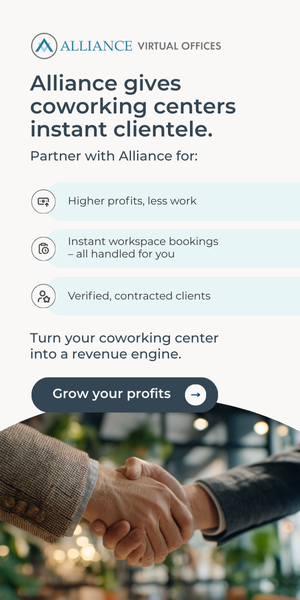- Imposter syndrome signals growth areas and helps identify where you’re stepping out of your comfort zone.
- Reframing imposter syndrome can turn self-doubt into a tool for self-improvement.
- Building a “brag catalog” of achievements boosts confidence and challenges imposter syndrome’s narrative.
If you have been working long enough, chances are that you are familiar with the concept of imposter syndrome, which refers to a pattern of beliefs where an individual doubts their accomplishments and has a persistent fear of being exposed as a “fraud,” despite evidence of their competence.
People experiencing imposter syndrome often attribute their success to luck or external factors rather than their own abilities, leading to feelings of inadequacy and a constant fear of being exposed as incompetent.
The paradox is that this phenomenon is particularly common among high-achieving individuals; not only leaders, but also academics, athletes, and artists — and it can significantly impact their self-esteem and mental well-being.
In our work coaching executives, we have come to the conclusion that instead of seeing imposter syndrome as a “bad thing,” you can actually make friends with it and realize that it’s just doing its job of protecting you.
In other words, it’s raising a flag to tell you that you are out of your comfort zone, and to be careful.
When you reframe imposter syndrome as a friend and not a foe, you can start channeling a lot of its latent power into positive drive.
The issue with the old view of imposter syndrome is the premise that you should accept the underlying message that you are “inadequate” and intrinsically “not good enough,” with the underlying assumption that this cannot be changed, which is typically associated with a fixed mindset.
The new view of imposter syndrome is connected with a growth mindset: it’s just telling you that you are not YET competent enough and giving you a hint that there is gold buried underneath waiting to be found.
In other words, imposter syndrome is a liar, but it’s a persuasive one. The key is to challenge its narrative with evidence of your accomplishments and capabilities.
How to Turn Imposter Syndrome Into an Advantage at Work
When you reframe imposter syndrome from foe to friend, what you are effectively doing is allowing it to coach you from the fearful self into a confident and capable version of yourself.
How do you do that? We coach our clients to go through four simple steps:
1. Acknowledge it
When you catch yourself doubting your abilities or your competence, instead of thinking you are sabotaging yourself, just realize that it’s your friend protecting you. Recognize and acknowledge the feelings associated with it.
This involves accepting that self-doubt and insecurity are normal experiences, especially in high-achieving environments. You can even take distance from it by saying “it’s just my imposter syndrome flaring up” (and not you).
2. Listen to it
Many of these parts of ourselves are created for the same reason: to protect us. So, when you notice imposter syndrome, imagine you can be in dialogue with it. Just thank it for doing its job and ask it: “What are you protecting me from in this situation?”
In most cases, it will be fear of failure, a sign that you are out of your comfort zone, or that this is new territory and therefore that you need to proceed with caution. Then, take the time to reflect: what exactly is making you uncomfortable?
For example, it might be telling you “You are not good with numbers and this is a very analytical challenge.” Even if it’s not true, this is a good insight into the source of the warning and therefore pointing toward what you need to either strengthen or debunk. And often, it’s the latter which takes you to the next step.
3. Provide evidence of the contrary
Here is where what we call “your brag catalog” will come in handy. Make a thorough inventory of all the major achievements you are proudest of, personally and professionally, and the skills and superpowers that you harnessed as you conquered each of them.
Have this list with you at all times, nurture it and build on it as you conquer new obstacles. This will be the equivalent of a living, breathing “pep-talk in your pocket.”
Have the list on your phone, and make sure you keep building on it. You should even ask friends and family to contribute to it, because we often forget what we have accomplished and friends will most likely sing your praises more than you do yourself.
In moments of self-doubt, go through your list, pick the skills and accomplishments that are most relevant to the situation at hand, and remind yourself of all the instances in which these superpowers served you well.
4. Make a plan and act accordingly
Once you have understood that the source of the discomfort is simply fear of failure, that you are out of your comfort zone, and that you are very capable to overcome this new challenge, it’s time to make a plan.
Identify and list the challenges ahead, make a plan to overcome them leveraging your skills and knowledge, adjust accordingly and proceed with courage!
As you make friends with imposter syndrome, you will notice that you are actually training yourself to intentionally embrace a growth mindset. The regular practice of channeling your self-doubts into fuel for self-improvement will help you:
- Embrace Challenges as opportunities to learn and improve.
- Cultivate Persistence especially in the face of setbacks or failures.
- Learn from Feedback as valuable information that can help you grow and develop.
- Adapt Strategies to be adaptable and resourceful.
- Celebrate Progress regardless of the outcome.
Turning imposter syndrome on its head is truly a winning leadership strategy. We see this happen over and over again with the leaders who we coach. It will work for you as well.
This article was written by Tom Preston, Founder of The Preston Associates, and Luciana Nuñez, Head of Americas and Partner at The Preston Associates, co-authors of COACHING POWER.


 Dr. Gleb Tsipursky – The Office Whisperer
Dr. Gleb Tsipursky – The Office Whisperer Nirit Cohen – WorkFutures
Nirit Cohen – WorkFutures Angela Howard – Culture Expert
Angela Howard – Culture Expert Drew Jones – Design & Innovation
Drew Jones – Design & Innovation Jonathan Price – CRE & Flex Expert
Jonathan Price – CRE & Flex Expert














